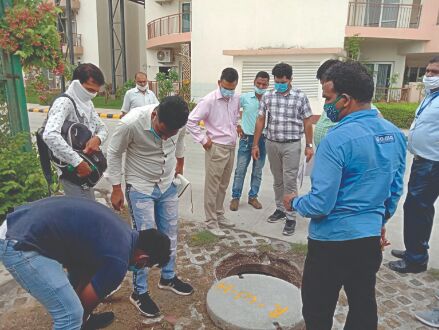Ggm: Groundwater recedes further, now at 36.99 metres below ground

Gurugram: In what has proved to be a major concern for long, groundwater levels in Gurugram have continued to recede dramatically, with the levels reported to be at 36.99 metres as per a 2021 assessment and this despite the halted and reduced construction and building activities in light of the pandemic.
According to Haryana Government figures, in 2020, the groundwater had gone down to the level of 36.21 metres. In 2019, it was 35.85 metres and 33.23 metres in 2018. To just get a sense of how much depletion of groundwater there has been in Gurugram can be seen from the fact that in 2006, the groundwater levels were at 19.85 metres below the ground.
Not only in urban parts but even in rural areas of Gurugram, there is a massive depletion of groundwater reserves. The groundwater reserves in Pataudi have dipped from 35.5 metres in 2018 to 37.5 metres in 2020. In Sohna, it has dipped from 24.9 metres in 2018 to 25.8 metres by 2020 while in FarrukhNagar it went down from 19.9 metres in 2018 to 20.8 metres in 2020.
One major reason for falling groundwater reserves has also been attributed to extinct water bodies in and around Gurugram. Taking cognizance of how rapid and unplanned urbanisation had resulted in the extinction of water bodies after public pressure, the State government started to look for a solution to this problem.
In 2019, through public-private partnership, an organisation known as Gurujal was set up. Primarily focussed on reviving water bodies, this organisation has focussed on other aspects to improve groundwater situation in and around Gurugram.
At present, Gurujal is working on the revival of 25 ponds. In these 25 ponds, 13 are under the Municipal Corporation of Gurugram (MCG) and 12 are owned by the Panchayati lands. Assurances have also been given to act against illegal borewells in the city that continue to extract large amounts of groundwater.
The Central Ground Water Authority (CGWA) had declared Gurugram under a dark zone in 2016. Lack of regulation and seriousness on this issue did not improve the situation and in 2018 the public body observed that the groundwater extraction rate in Gurugram was 308 per cent.
With water shortages especially during intense summers now becoming one of the major problems in the city, the Haryana Government has now begun to take note of this issue and are taking preventive steps. Most of the residential societies in Gurugram are now being encouraged to implement rain water harvesting so that enough water reserves can be stored.



